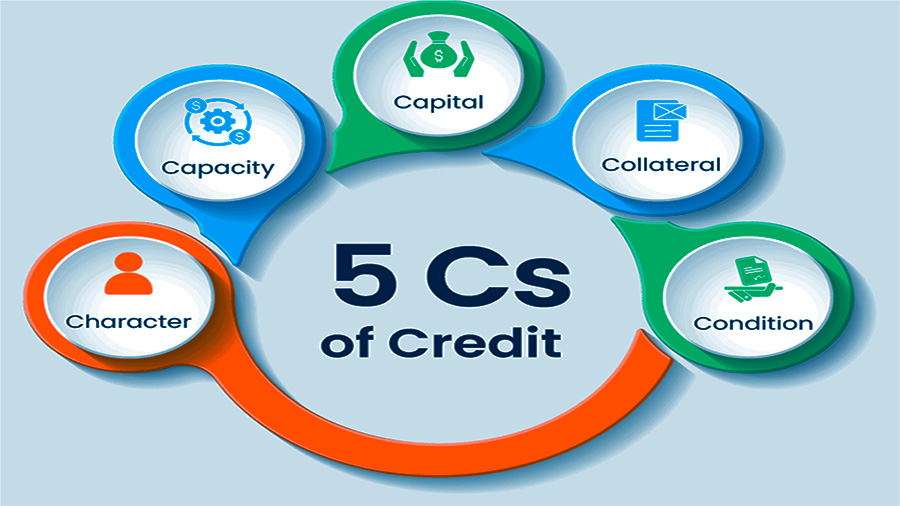Industry conditions and market trends are crucial elements in credit risk evaluation. They not only affect the stability of sectors but also influence the likelihood of borrower defaults and the overall risk profile. Understanding these factors enables lenders to make informed decisions, adjust credit terms, and manage risk more effectively. This article explores how industry conditions and market trends shape credit risk assessments and provides insights on adapting evaluation strategies to current economic and sector-specific dynamics.
How Do Industry Conditions And Market Trends Impact Credit Risk Evaluation?
Industry conditions and market trends significantly impact your credit risk evaluation. When industry conditions are favorable, businesses within that sector are generally more stable, leading to lower credit risk. Conversely, struggling industries can increase the likelihood of defaults, raising the credit risk for you as a lender. Market trends such as economic downturns, regulatory changes, and technological advancements also influence a borrower’s ability to repay loans.
Understanding these external factors helps you make more informed decisions about extending credit. For instance, if you notice that a certain industry is facing downturns due to technological shifts or supply chain disruptions, you should assess borrowers from that industry with heightened scrutiny. Additionally, monitoring macroeconomic trends like inflation or geopolitical events can give you insights into future credit risks.
Incorporating these insights into your credit risk evaluation process enables you to mitigate potential losses and set appropriate loan terms. By actively monitoring industry conditions and market trends, you can better manage the risks associated with lending, ensuring a balanced and profitable credit portfolio.
- Evaluate your borrower’s industry for stability.
- Monitor economic trends that impact credit risk.
- Adapt credit terms based on current market conditions.
Lastly, stay proactive and informed. Adjust your strategies based on evolving market landscapes to effectively manage credit risk, ensuring that you can extend credit wisely and securely.

What Challenges Are Commonly Faced In Credit Risk Assessment, And How Can They Be Overcome?
You often face significant challenges in credit risk assessment. By addressing these, you can improve your processes and outcomes.
- Data Availability and Quality: Incomplete, inaccurate, or outdated data can skew your risk evaluations. Implementing data governance frameworks and using advanced analytics can help validate and enhance the quality of your data.
- Selecting and Developing the Right Predictive Models: Machine learning and AI can help you refine these models continuously based on new data and outcomes.
- Regulatory Compliance: Staying compliant with changing regulations is demanding. Robust risk models and ensuring transparency can help you stay on top of legal requirements and avoid penalties.
- Economic Volatility: Economic volatility adds another layer of complexity. Stress-testing and scenario analysis are crucial to prepare for varying economic conditions.
- Skilled Personnel: Finding and retaining skilled personnel in credit risk is challenging. Partner with managed service providers or outsource to access specialized expertise.
- Technological Integration: Integrating sophisticated risk management tools can be complex. Cloud-based software and automation tools can streamline your data collection and analysis.
Finally, by focusing on data governance, advanced analytics, regulatory compliance, economic preparedness, skilled personnel, and technological integration, you can effectively overcome common credit risk assessment challenges.
How Does The Borrower’s Credit History Influence The Credit Risk Assessment Process?
Your credit history significantly influences the credit risk assessment process. Lenders evaluate your past borrowing and repayment activities to gauge your ability to repay future debts.
- Payment History: Consistent on-time payments illustrate reliability and responsible debt management.
- Credit Utilization: Lower use of available credit suggests you manage it wisely and are less likely to default.
- Length of Credit History: A longer credit history provides more data points, indicating experience in handling credit.
- Credit Mix: A diverse mix of credit types (e.g., credit cards, mortgages) shows you can manage various credit forms.
- Credit Inquiries: Frequent credit inquiries may signal financial distress and increase perceived risk.
Lenders also scrutinize public records (e.g., bankruptcies, foreclosures), delinquent accounts, and inquiries to form a comprehensive view of your financial health. A strong credit history lowers the perceived risk, often resulting in better loan terms and interest rates. Conversely, a poor credit history can lead to higher interest rates or loan denial.
By maintaining a healthy credit history through timely payments and responsible credit use, you improve your chances of obtaining favorable lending terms.
In closing, your credit history plays a crucial role in the credit risk assessment process, influencing everything from loan approval to interest rates. Keep making timely payments and using credit responsibly to enhance your borrowing prospects.

What Are The 5Cs Of Credit Risk, And How Do They Help In Identifying Potential Risks?
The 5 Cs of credit risk are Character, Capacity, Capital, Collateral, and Conditions. These factors help you evaluate creditworthiness and identify potential risks.
- Character: This looks at your credit history and reputation. Lenders check your credit reports, scores, and past payment behavior to determine your reliability in repaying debts.
- Capacity: This measures your ability to repay the loan. Lenders assess your income, employment stability, and existing debt to ensure you can meet loan obligations.
- Capital: This is the money you have invested in your business. A higher personal investment reduces lender risk, as you are less likely to default if you have a significant amount at stake.
- Collateral: These are the assets you can offer as security for the loan. Collateral reduces lender risk because they can claim these assets if you default.
- Conditions: This considers the loan purpose, amount, interest rate, and economic factors. Lenders assess how external conditions might impact your ability to repay.
Overall, using the 5 Cs of credit risk helps you minimize the risk of defaults and financial loss by thoroughly understanding a borrower’s credit profile and financial situation.
How Can Financial Statements Provide Insights Into A Borrower’s Creditworthiness?
Financial statements provide you with crucial insights into a borrower’s creditworthiness by offering a detailed picture of their financial health. Here’s how each part can help you decide if you should lend:
- Balance Sheet: This shows what a borrower owns (assets) and owes (liabilities) at a specific time. You should check liquidity (how quickly assets can be turned into cash), solvency (ability to meet long-term obligations), and leverage (amount of debt used).
- Income Statement: This details a borrower’s earnings and expenses over a period. Focus on profitability (are they making money?), revenue growth (is the business growing?), and operating efficiency (how well they manage costs). Key metrics include gross profit margin, net profit margin, and EBITDA (Earnings Before Interest, Taxes, Depreciation, and Amortization).
- Cash Flow Statement: This tracks cash moving in and out of the borrower’s business. Assess if they generate enough cash to pay debts by looking at operating cash flow (day-to-day operations), investing cash flow (buying/selling assets), and financing cash flow (borrowing/repaying debt).
By analyzing these statements, you can gauge a borrower’s financial stability, repayment ability, and risks. This helps in making loan decisions, setting interest rates, and determining credit limits. You should compare the business to industry norms and against projections for deeper insights. Calculating ratios like the current ratio, quick ratio, and working capital can also help you assess their ability to meet obligations.
As a final point, financial statements empower you to make informed decisions by providing a clear picture of a borrower’s financial health, ensuring you assess their repayment ability and potential risks effectively.



